Gleichen Buffalo Jump – with Jon Dirks
For this adventure we’re accompanied by fellow history explorer Jon Dirks and together we examine an old forgotten Buffalo Jump not far from Gleichen Alberta. Know as a Pishkun (or Piskun) this was once a place of great importance to the Blackfoot People. Today it’s quiet, save for the noise of the highway and the a whinnying of a few horses that run nearby, but at times of the hunt it was was chaotic and wild place.
When most people think of a Buffalo Jump, they picture a huge cliff, where stampeded animals would plunge to their death. That’s perhaps a bit romanticized and while the stampeding part is correct, typically the slope would be less dramatic, more gentle and not as high (not many big cliffs on the prairies). Rather then plunge to their death, animals would either be injured or in a such state of confusion after tumbling down the slopes that they could easily be dispatched – using arrows, spears or stone hammers and later, guns.
The hunt was cause for great celebration, and it would supply much of the food and clothing needed for the upcoming year.
Supporting the great hunt, a team would be kept busy processing the animals and nearly everything, from the meat to the hide would be used. The only things left behind would be bones – you’ll notice that most of them appear smashed and this was to extract the rich marrow inside.
Before we go too far, a short clarification on the term Buffalo – technically these animals are Bison, and while incorrect, the term Buffalo is so often used that it’s become acceptable. We’ll consider both terms interchangeable.
In spite of research, we were unable to find any significant amount of information on the jump. Unlike others, for example the well known “Head Smashed In Buffalo Jump” this one is rather obscure in comparison. None the less, we were able to uncover a few interesting bits.
For example, from the book, “The Prairie Hub”, a history of the area (1967), we see mention that in 1883, the Buffalo Jump was in a state of disrepair. Earlier corrals and chute fences and such had been erected for the purpose of guiding the Buffalo to the slope, and to fence in those still alive at the bottom – but by this date they were falling down hinting that it’d been a number of years since the jump was last used.
Another passage makes mention of the huge herds that once roamed in the area and it’s estimated that several million animals lived in this region of Southern Alberta alone.
In that same book, mention is made of the jump being worked over by archeologists in the early 1960s and many arrowheads, according to this article, were found. A quick search shows these items are now in the possession of the Glenbow Archives. Interestingly, the Buffalo Jump is refereed to as a “Pinkin” in that text. It’s not known if this was a simple grammatical error (the correct terms according to my research are Pishkun or Piskun) or if this was a localized variant of that word.
In that same article, mention is made of slide that took place at some date (not stated) which buried many of the bones left behind.
At various times throughout the 1880s and 1890s, the 1910s and again the 1940s (and perhaps other dates in between) the slopes were “mined” by the tribe for the bones – to be used to make charcoal, as a fertilizer or as an ingredient in explosives. Indeed, photos showing this digging activity can be found at the Glenbow Museum and when visiting the site, one can clearly see these pits. Time has not obliterated them.
Interestingly, the Buffalo Jump is not on the Gleichen (Siksika) Reserve and is instead north of it.
One important point not found was when this Buffalo Jump was first used. Given the huge numbers of bones scattered about, it must have been active for many generations however. When it was abandoned is not clear either but recall we found mention in a book that it was in a state of disrepair in the 1880s – so lets say by then it was unused for at least a few years at least.
On our visit we start from the back side of the jump in order to get a good overall look of it. The bluff is quite high and the view stupendous. In spite of the gentle slopes below us they were steep enough to serve their purpose. The animals would be surprised by the land dropping away which would cause them to trip or stumble and to then fall or roll down the slope where they’d be either injured or so disoriented as to be an easy target for those hunters waiting for them below.
From this lofty view point we had a good look at the slopes extending below us, the flat area where they killing and processing would happen, and to the vast prairies beyond. From here we can see the noisy Trans Canada highway not far away, along with a huge high-throughput grain elevator near the train tracks. A number of horses play and run in the field below.
We walk along the top of the bluff imagining the chaos and excitement of the Buffalo Hunt. The animals would be stampeded towards the bluff and typically a chute of stones or posts wild help funnel and concentrate them towards some small point. The whole time, hunters on fast horses would parallel the herd, guiding them to their eventual death. Once frightened, the herd was close to unstoppable, which was used to the hunter’s advantage.
Making our way down the slopes (the going is easy), we spot our first bone, a skull. It’s small and was perhaps from a juvenile Buffalo. Further down, we come to to a small plateau and here we see the pits from the those digging we spoke of earlier. While I imagine this jump would be considered a scared place, at the same time, the money that could be had digging the bones must have been irresistible.
At the bottom of the next slope we find the greatest concentration of bones, most of them fragments, and the whole area is littered with them. They would smash them in order to extract the marrow, and this explains why so few intact ones are found. Over time, a lot of bones must have accumulated here and I bet if we dug down, we’d find some no matter how deep we went.
Near here, we find a more recent archeological discovery a 1960s-1980s era stubby beer bottle.
Roaming around we also find the bones of a more recently deceased animal (a horse I think). While here some live horses come to see what we are up too, but they quickly tire of us and go back to playing and running around.
The area in which the bones can be found is broad and wide – in was clearly a huge and important site.
The nearby Siksika Reserve is home to several thousand people and is part of the Blackfoot Confederacy (Blackfeet in the US), comprising many tribes spread over Alberta and the state of Montana. They have lived and hunted in the area for eons. Perhaps their most famous member was Chief Crowfoot, a signatore of Treaty 7, the agreement between the Nation and the Canadian Government.
This Buffalo Jump is on private property and permission is needed to enter it.
If you’d like to join us on an adventure, as Jon Dirks did, we always welcome the chance to collaborate with those who share our interests. To see some reports were we partnered with others, follow these links…
Bow City townsite with Forgottenalberta.com.
Deanz Garage – with Sharpeshots.com.
Abandoned and old part 1 – with Sharpeshots.com.
Check out this post…
Genealogists don’t let the truth get in the way of a good story.
If you’d like to know more about what you’ve seen here, by all means contact us!
Date: October, 2013.
Location: Gleichen, AB.
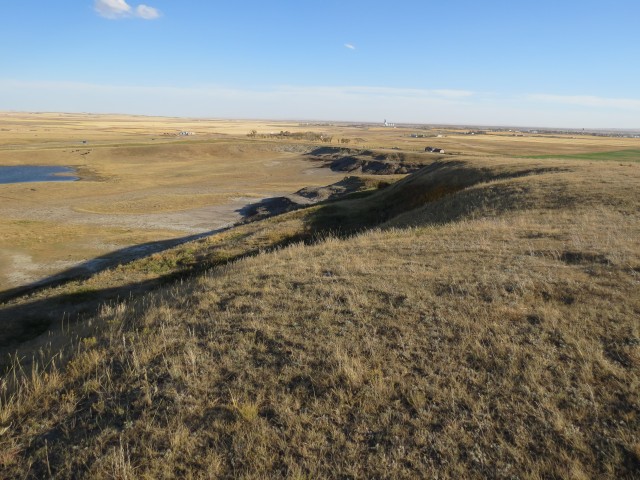
An overall view of the Gleichen Buffalo Jump.
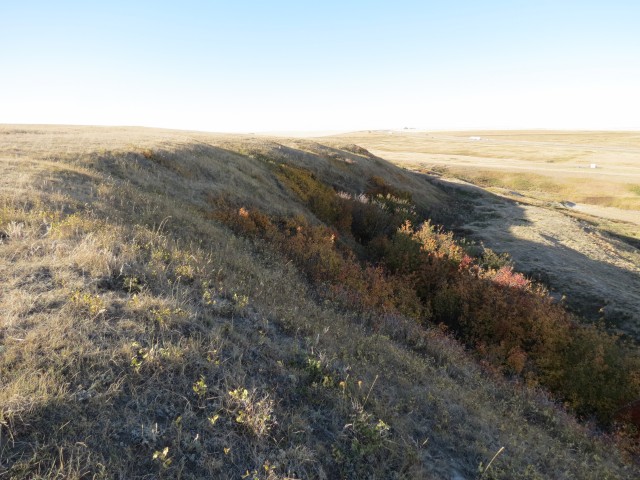
It’s known as a Pishkun (or Piskun) in the Blackfoot Language.
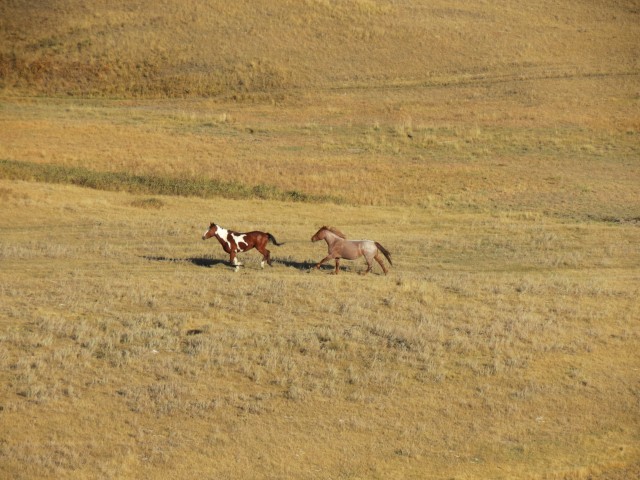
A mini stampede in the field below…
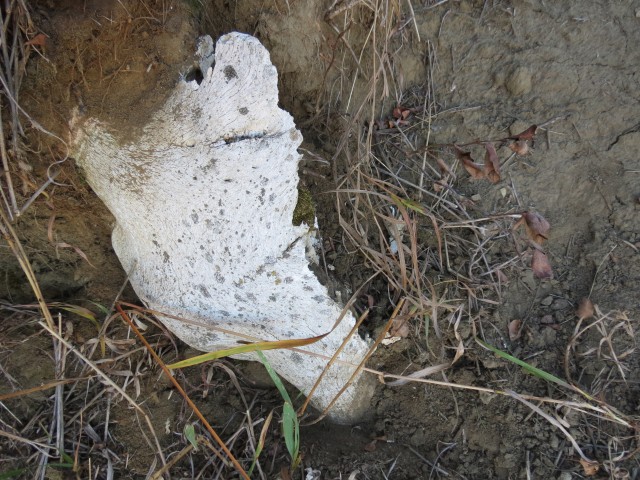
The slopes were littered with bones, including this skull.
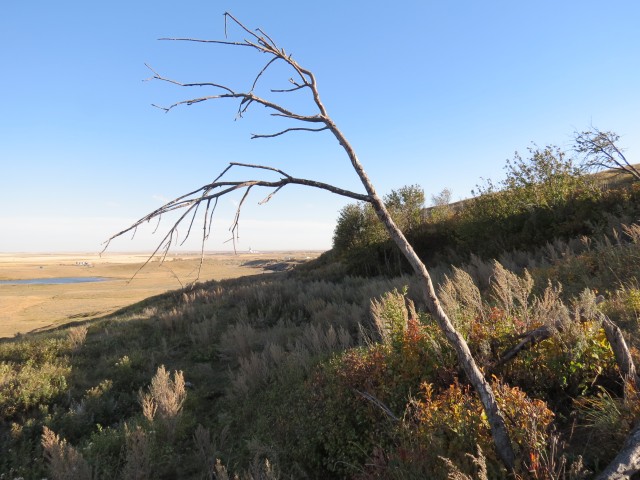
To be effective, a Buffalo Jump only needed gentle slopes like this.
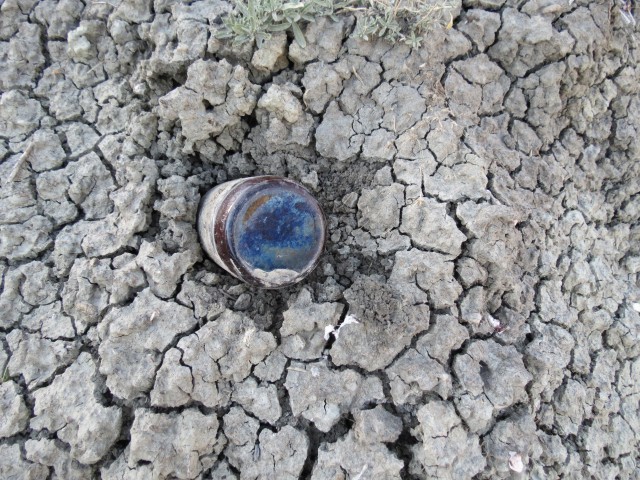
A more recent archaeological find, a circa 1960s-1980s stubby beer bottle.
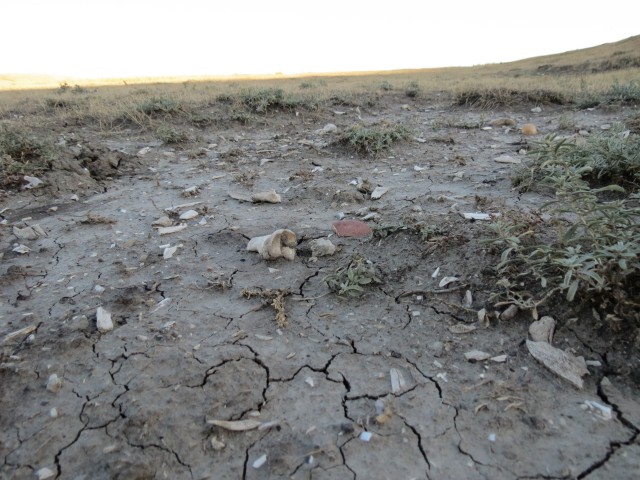
Many bits of bone found at the base of the slope.
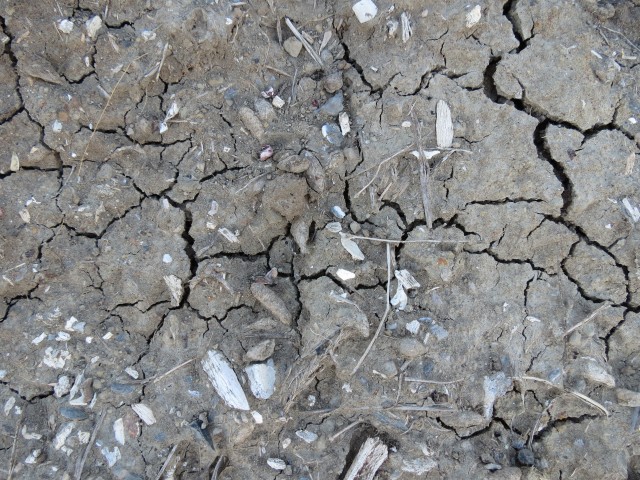
The huge number of fragments seen tell us this jump was used for generations.
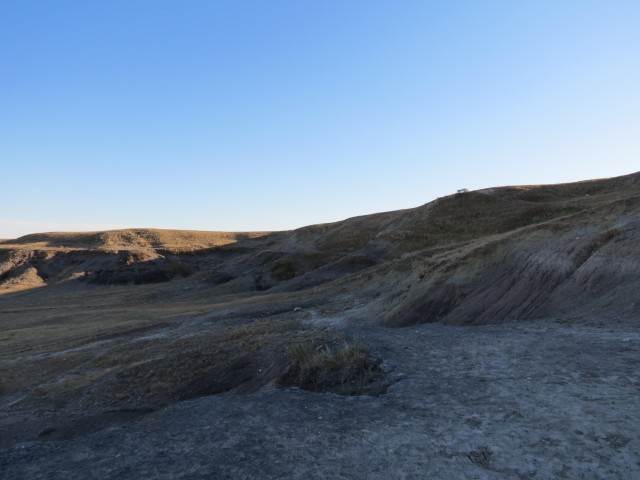
The buffalo would be stampeded over this modest bluff.
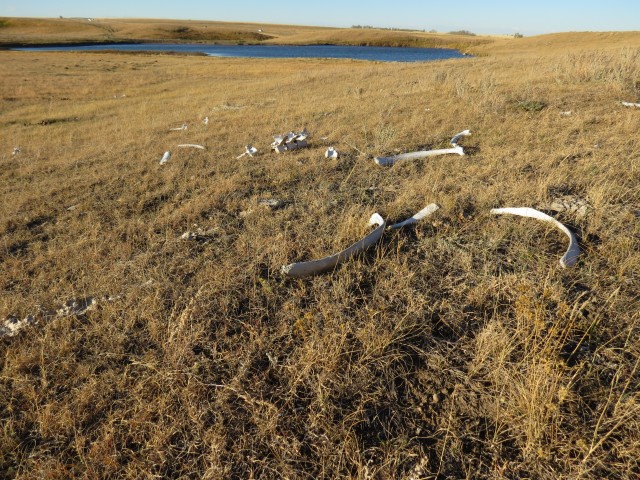
Bones from a more recently deceased animal.
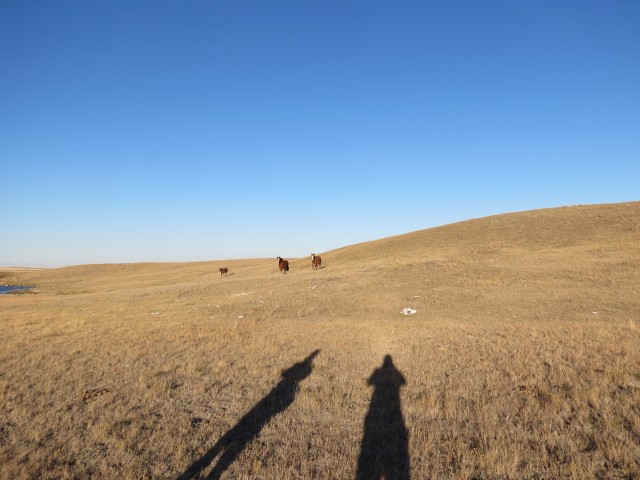
These horses took a great interest in us.
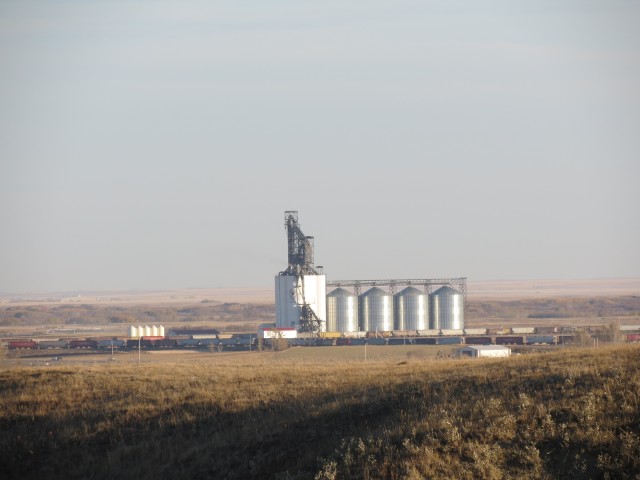
Off in the east we see a high throughput grain elevator.
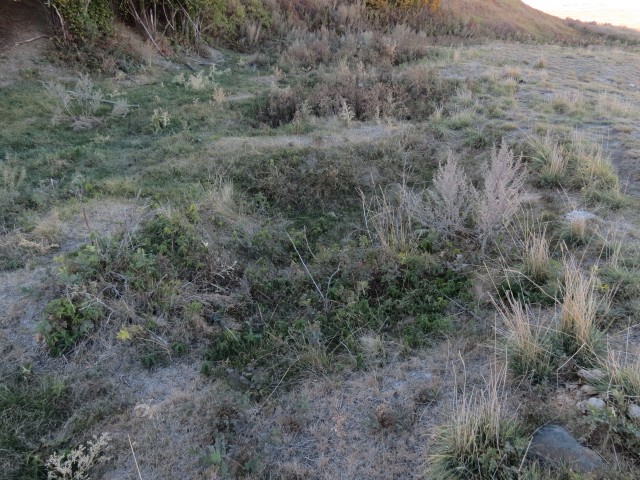
These pits are evidence of people digging here (read the post to find out who).

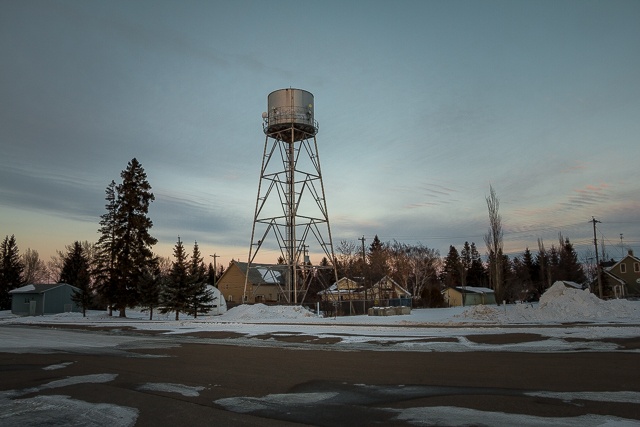
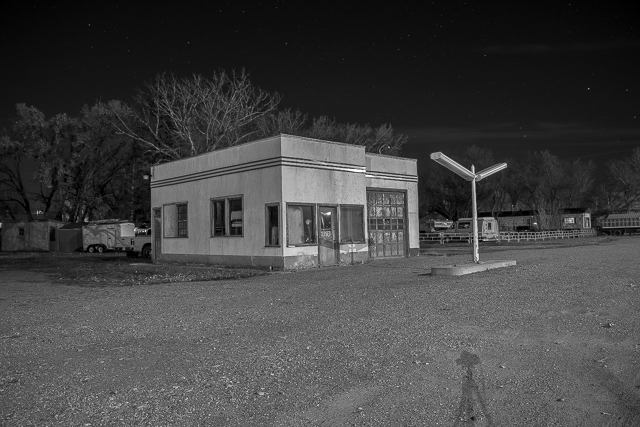
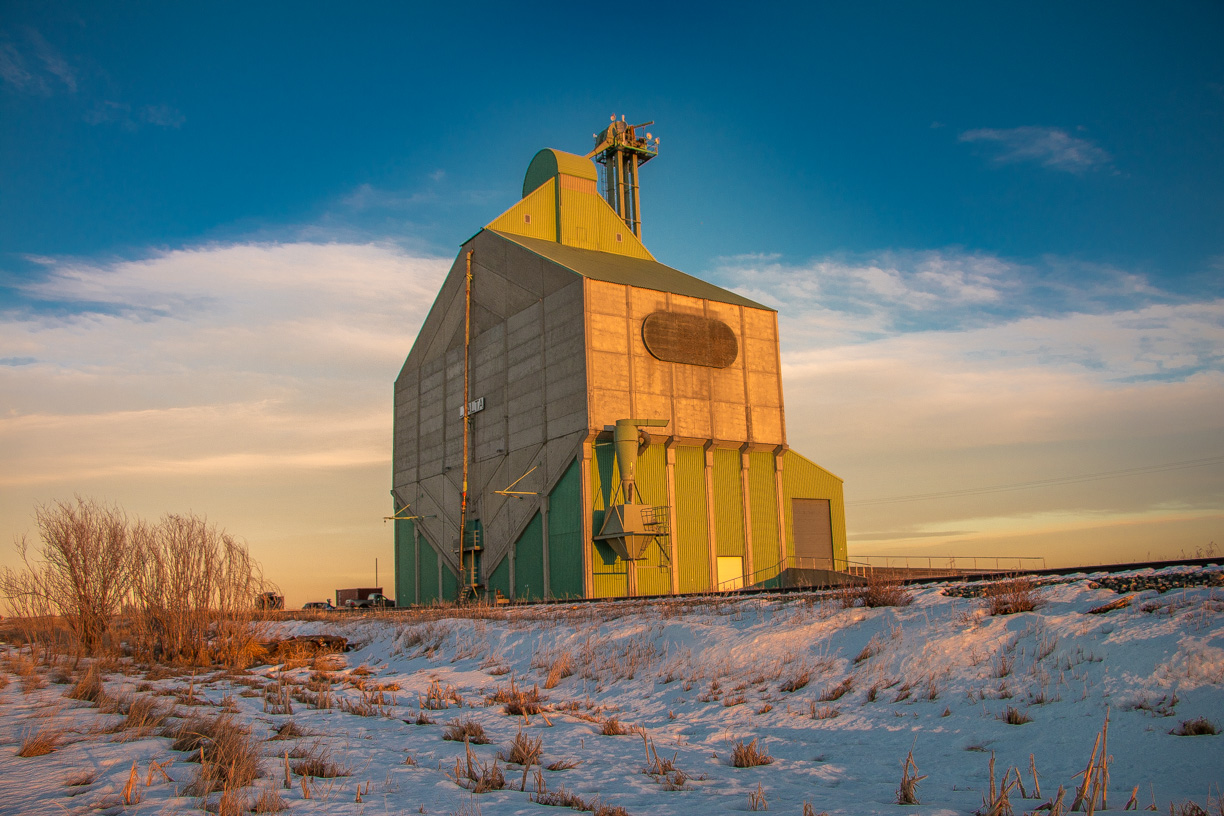
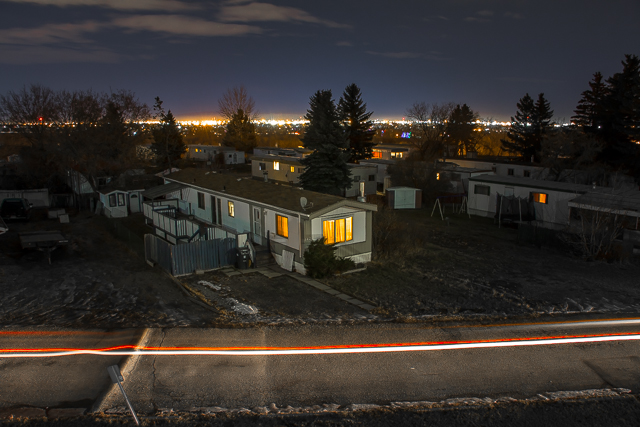
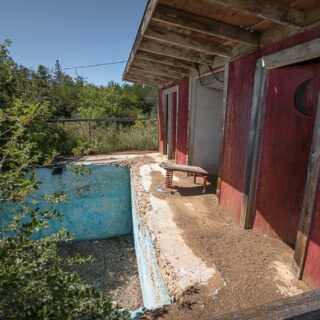
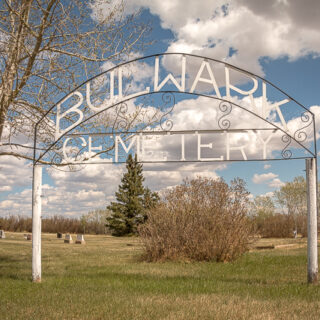
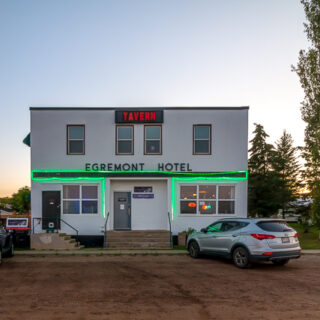
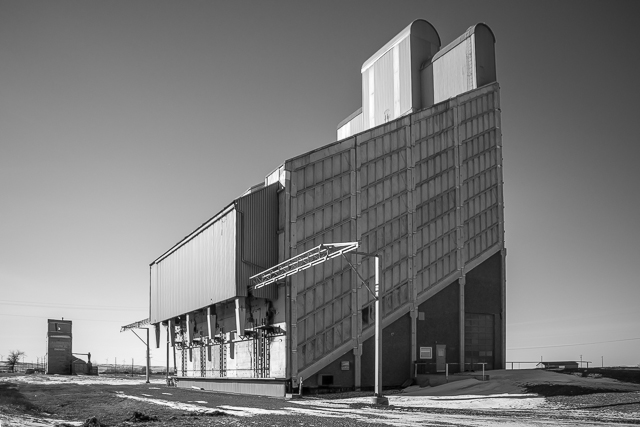
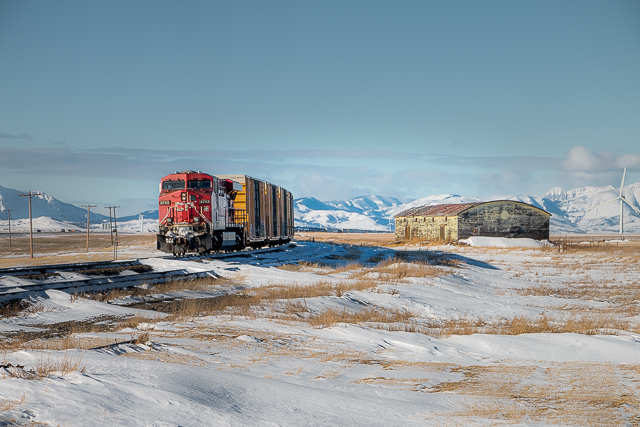
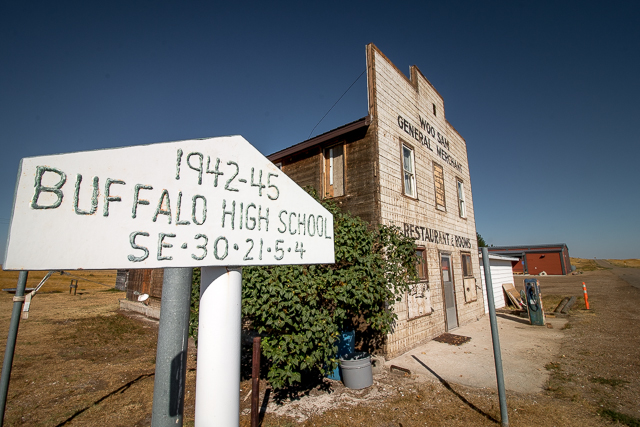
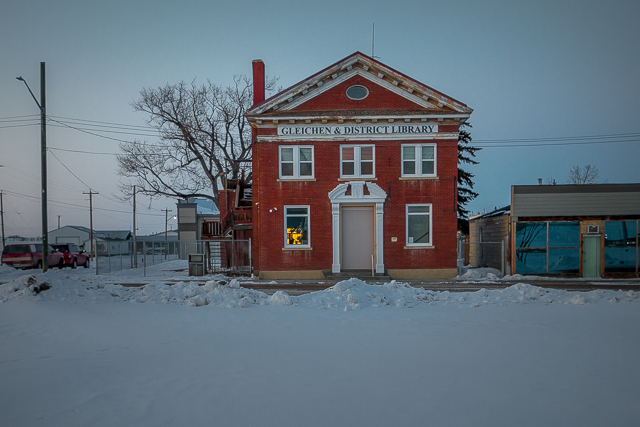
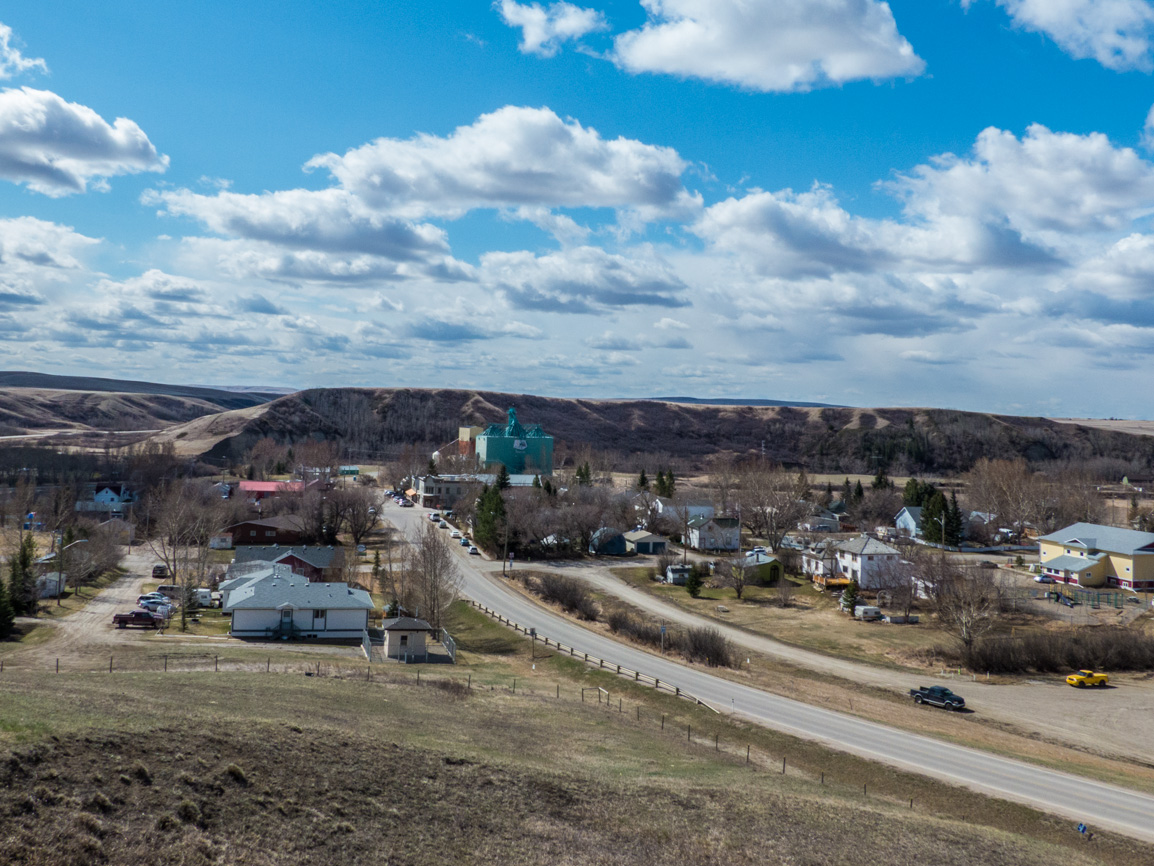
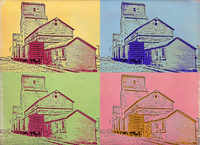






Nice set of photos Chris. A sunny but very cold day?
This was in October. Warm, lovely October.